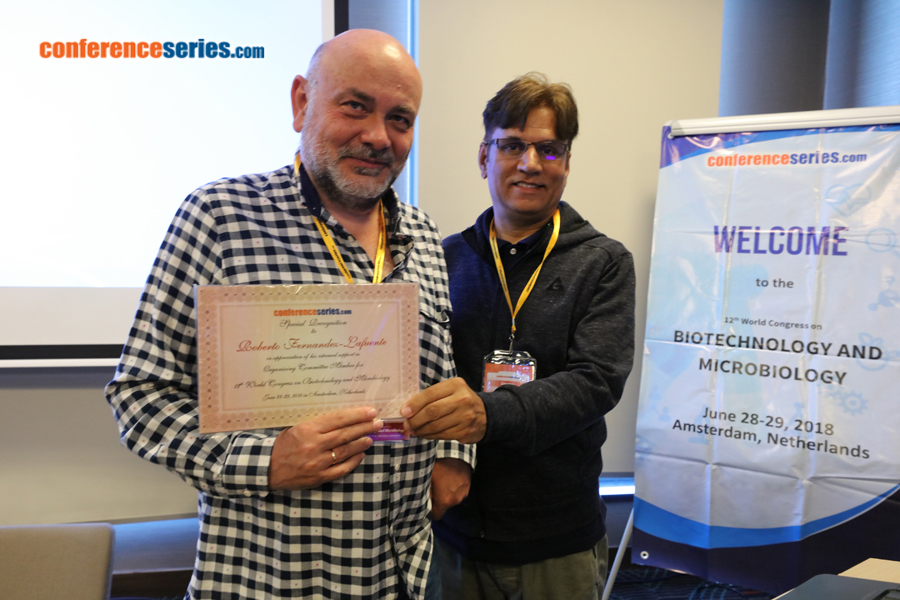
Roberto Fernandez-Lafuente,
ICP-CSIC, Campus Cantoblanco, Spain
Title: Title: Coimmobilization of enzymea. Necessity, Problems and some Solutions
Biography
Biography: Roberto Fernandez-Lafuente,
Abstract
Glutaraldehyde is among the most employed reagents in the preparation of immobilized enzyme biocatalysts. Usually, a support containing primary amino groups is used. This way, this support is actually a heterofunctional one with ion exchange capacity and hydrophobic groups, and also bearing chemical reactivity that can generate covalent bonds. For this reason, glutaraldehyde may immobilize enzyme by very different reasons, biocatalysts with very different activity/stability properties. For example: Adsorption of the enzymes on the aminated support via ion exchange followed by treatment with glutaraldehyde. Use of preactivated supports at low ionic strength, where the first step of the immobilization remains the ion exchange. Use of preactivated supports at high ionic stregnth to avoid ion exchange as first step of the immobilization, forcing the covalent attachment as the first immobilization step, that may depend on the immobilization pH. Lipases will be treated as a particlar case, as they can become interfacially adosrbed on the activated supports.





